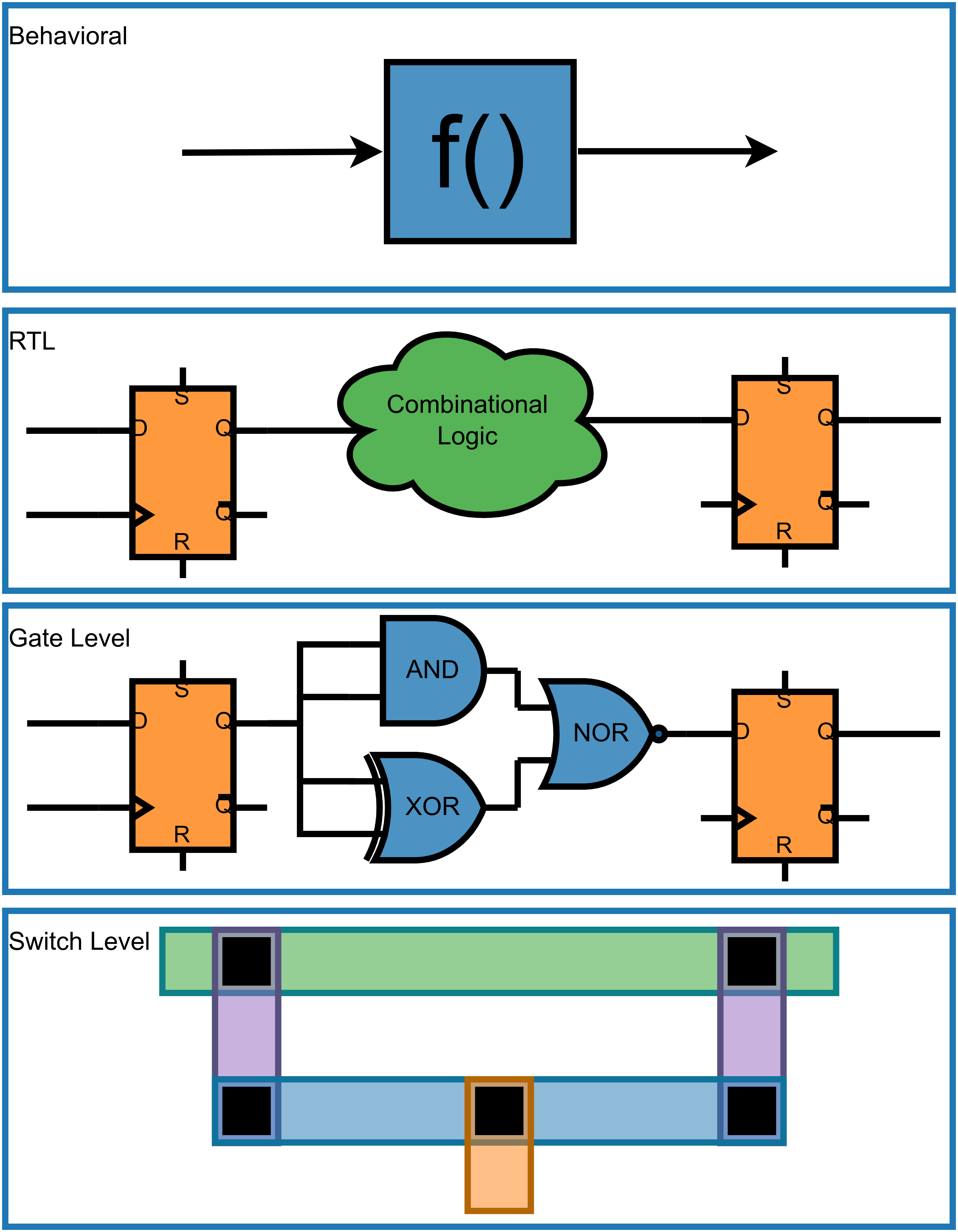
SystemVerilog
STA
Book Review
SystemVerilog Posts
SV17. FIFO Design and Implementation
A First-In-First-Out (FIFO) buffer is a fundamental digital design component that stores data in a queue-like structure. This guide provides...
SV16. Finite State Machines (FSM)
Finite State Machines (FSMs) are fundamental building blocks in digital design, providing a structured approach to implementing sequential logic. This...
SV15. SystemVerilog Clock-to-Q Modeling: Why Non-Blocking Assignments Matter
This guide focuses on one of the most important timing parameters: Clock-to-Q delay and how to model it effectively in...
SV14. Unique and Priority Identifiers in SystemVerilog
SystemVerilog provides three special keywords (`unique`, `unique0`, and `priority`) that can be used with `case` and `if` statements to provide...
SV13. SystemVerilog Casting Guide
Casting in SystemVerilog is a powerful mechanism for explicitly converting data between different types, sizes, and sign interpretations. This guide...
SV12. Difference between Bitwise NOT (~) and Logical NOT (!)
When working with Verilog or SystemVerilog, it's crucial to understand the distinction between the bitwise NOT operator (`~`) and the...
SV11. Signed Arithmetic in SystemVerilog
This page summarizes the key rules and pitfalls for synthesizable signed arithmetic in SystemVerilog, focusing on vector size, signed vs....
SV10. User-Defined Packages in SystemVerilog
If you work with SystemVerilog, you know the headaches that can come from improper scope management. In this wiki, I...
SV9. SystemVerilog Packed vs. Unpacked arrays
Ever wondered how packed vs. unpacked arrays really work in SystemVerilog? This article dives into the syntax, memory layout, and...
SV8. SystemVerilog Implicit Net Declaration
Tired of silent bugs caused by undeclared signals in SystemVerilog? This article explains how implicit net declarations work, when they...
SV7. SystemVerilog Built-in Data types: Data Type and Types
It covers the key distinctions between: Nets (representing connections) and Variables (representing storage). 2-state and 4-state data types, and how...
SV6. X Value Bugs in Digital Circuit Design (FPGA/ASIC)
𝗫 can represent an uninitialized state, uncertainty, or a conflict in multiple driver situations. The X value does not physically...
SV5. Simulation Event Scheduling in Verilog/SystemVerilog
Deep dive into simulation event scheduling, delta cycles, and non-blocking assignments. Understand how Verilog simulators handle timing and event ordering...
SV4. Differences between ASIC and FPGA RTL Coding
Master the key differences in RTL coding styles for ASIC and FPGA targets. Learn about timing considerations, resource constraints, and...
SV3. Simulation and Synthesis in Digital Design
Explore the fundamental differences between simulation and synthesis in digital design. Understand how your SystemVerilog code behaves in simulation versus...
SV2. Comparing FPGA and ASIC Design Processes
Learn the key differences between FPGA and ASIC design flows. Understand when to choose each approach and the trade-offs involved...
SV1. Levels of Abstraction in Digital Circuit Design
Understanding different levels of abstraction is crucial for effective digital circuit design. Learn about algorithmic, RTL, gate, and switch levels...